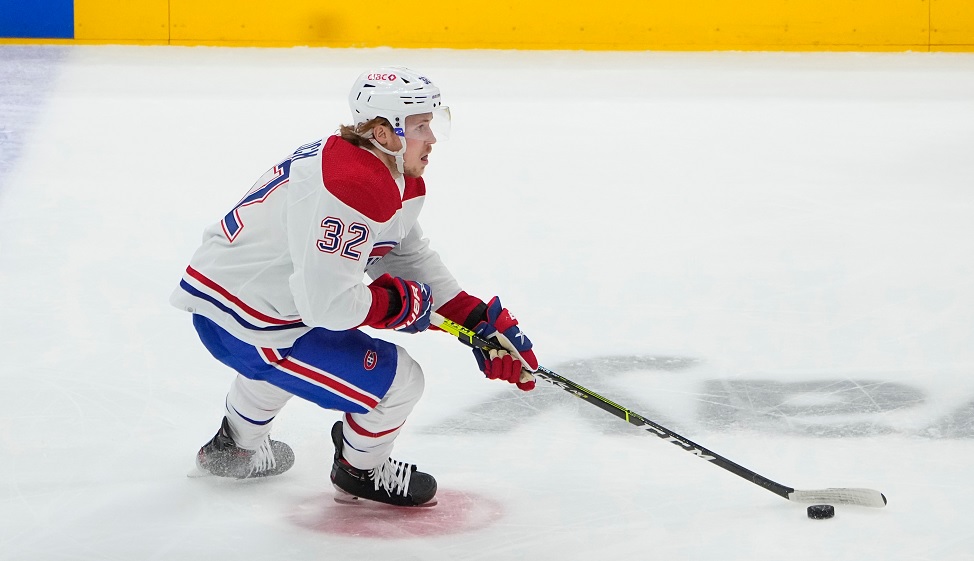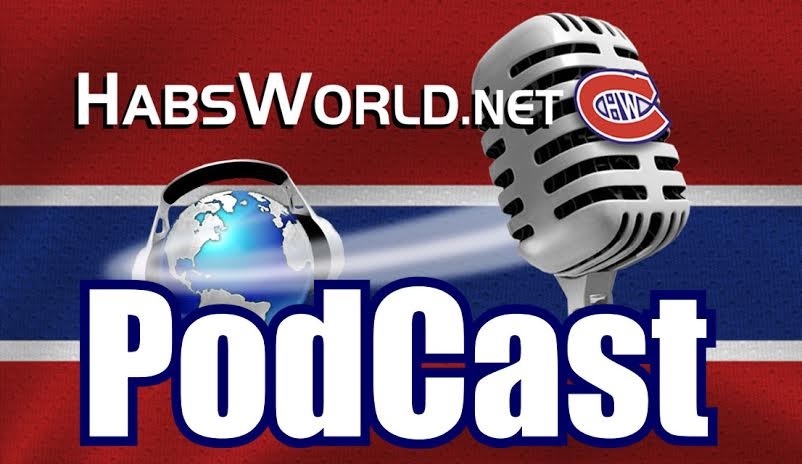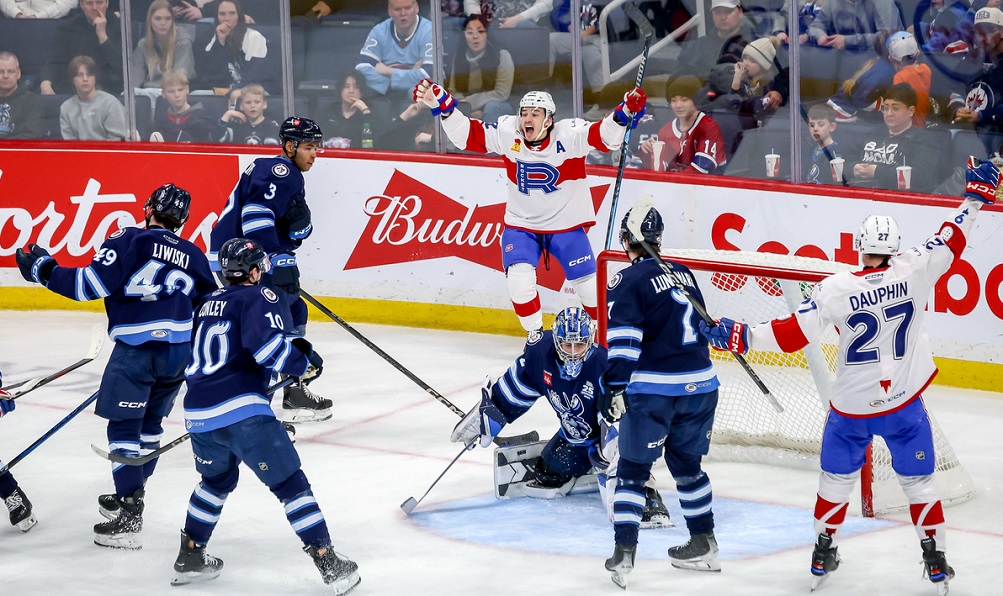HabsWorld.net --
A few years ago, the Habs were in good shape on the left wing. Since then, it has been an organizational weakness. Today, the Canadiens have some depth at the position although a lot of it is of the short-term variety.
For the purpose of breaking down the wingers, it will be done by handedness. We know some players will be interchangeable and play on both sides so the easiest way to break it down is by which way they shoot.
NHL
Signed: Paul Byron, Evgenii Dadonov, Jonathan Drouin, Mike Hoffman, Michael Pezzetta, Rem Pitlick, Juraj Slafkovsky
RFAs: None
UFAs: Mathieu Perreault
On paper, this looks like the Habs have a ton of depth. But how much of it is quality depth? And for that matter, how much of it is desirable long-term depth?
Dadonov was given away by Vegas in exchange for Shea Weber who has four years left on a contract that he’ll never play on. This came after they tried to pay Anaheim to take him off their hands at the trade deadline. He’s not a bad player but he’s a one-dimensional winger who is good when he’s on and not someone you want on the ice too often otherwise. Drouin and Hoffman are pretty much in the same category. Having one on a team that can get hot or cold is one thing but three creates some redundancy. Dadonov and Drouin are on expiring deals so that particular logjam is likely to resolve itself before too long while Hoffman has two years left.
Byron has been a hard-working role player for the last seven seasons but injuries have certainly started to catch up with him. He may not be ready for the start of the year due to lingering health trouble and if he is good to go, he’s basically a fourth liner at this point. He’s also on an expiring deal, making it three veterans in that situation. Again, the extra depth is short-lived.
But let’s move on to the ones that might be around for a little while. Slafkovsky, the top pick last month, is certainly going to be around for a long time with the Canadiens. The presence of these extra veterans could push him down to the minors to start next season (he’s eligible to play in Laval since he wasn’t drafted out of the CHL) which wouldn’t be the worst outcome, to be honest. He should be pencilled in the top six for years to come once he has developed.
The other two are young enough to be around for a little while but whose hold on roster spots are a little more tenuous. Pitlick impressed after coming over on waivers midseason and was eventually signed to a two-year deal at a price tag that’s just low enough to be buried in the minors if things don’t go as well in 2022-23. The Habs would certainly like him to be part of the longer-term picture but it’s far from a guarantee he will be. As for Pezzetta, he’s young enough (24) to be around for a bit but he’s a fourth liner at best and most likely someone who will be in the press box for long stretches.
Needs Assessment: Low – For the upcoming season, Montreal has more than enough depth to get through the year. Some will be moved closer to the trade deadline in February but they don’t need to add more to this spot.
AHL
Signed: Lucas Condotta, Rafael Harvey-Pinard, Joel Teasdale
RFAs: None
UFAs: None
AHL Contracts: Gabriel Bourque, Brandon Gignac, Danick Martel, Emile Poirier, Brennan Saulnier
AHL Free Agents: Kevin Roy
Harvey-Pinard is the top prospect out of this group. He was elevated to a consistent offensive role last season and made the most of it, notching 56 points in 69 games but is someone that is still more likely to be a bottom-six role player with the Habs. If it wasn’t for the extra veteran depth with the big club, Harvey-Pinard would be one to watch for in training camp in terms of battling for a roster spot.
Teasdale has seen his stock dip the last couple of years due to a variety of knee injuries but he played well after coming back in the final few months of last season. He followed that up by struggling in the playoffs so while he was tendered a qualifying offer, he has a long way to go to get himself into the mix for a recall.
Condotta was a surprise signing on the college free agent market. He’s someone that doesn’t have a particularly high ceiling but brings some elements that work as a fourth liner – good defensive ability, physicality, discipline, and an ability to play down the middle. (I think of him as what they’d like Pezzetta to be.) He played his way into the lineup in the playoffs but being on a one-year deal, he’ll have to show a lot quickly.
As for the players on AHL deals, it’s a pretty long list. Gignac is the only one on a two-year deal after becoming a very valuable energy player and one of Laval’s best playoff performers. He’s someone that will likely bounce up and down the lineup on a regular basis. Martel is a capable veteran scorer who also stepped up in the playoffs to show that he’s capable of contributing lower in the lineup. Bourque had a really slow start last season but became a valuable checker as the season went on and is a good candidate to be named captain to replace Xavier Ouellet.
Poirier returns to North America after splitting time between Latvia and Sweden last season. The 2013 first-round pick qualifies for veteran status which could limit how much time he’s in the lineup when everyone is healthy and should be in the bottom six when he is in. As for Saulnier, he’s an energy player who should be on the fourth line when he’s with Laval although time with Trois-Rivieres is a definite possibility as well.
Needs Assessment: Low – There’s always room for a bit more AHL-contracted depth but otherwise, there isn’t much that needs to be done here.
Other Prospects
There’s a long list of players to go through here so let’s jump right in.
Emil Heineman is someone that many expected to be in Laval this coming season. He’s under contract with Montreal but now, it appears as if he’ll stay in Sweden for one more year. He’s someone whose ceiling is a middle-six winger if everything comes together.
Everything came together quite well for Joshua Roy last season as he led the QMJHL in scoring and then averaged more than two points per game in the playoffs. There isn’t much left for him to do in junior but he’s not Laval-eligible this season. There are still some holes to work on in his game but he has gone from a project to a good prospect fairly quickly.
Sean Farrell had a strong first season at Harvard, earning him a spot on Team USA for the Olympics and World Championship for good measure. He has legitimate top-six potential but at just 5’9, he’s also one of Montreal’s smallest forward prospects. There is a belief he may turn pro after the college season so he could be an option to see some NHL action down the stretch.
Luke Tuch was a second-round pick back in 2020 with the profile of being a power forward but the production hasn’t been there through his first two seasons at Boston University. It’s still too early to write him off entirely but at this point, he looks like more of a depth player than an impact one. Speculatively, he feels like someone that the new management team might want to trade.
Rhett Pitlick quietly had a decent freshman year at Minnesota to at least stay on the radar. He’s speedy and skilled but the question has been whether or not he can put everything together consistently enough to be an impact scorer which keeps him in project territory. That’s also where Cedrick Guindon fits in, albeit as a junior player. His rookie year with Owen Sound showed some promise but there is a lot of development needed in all areas for him to push for an entry-level deal within the next two years.
Then there are a couple of players that are in non-prospect territory. Alexander Gordin was an impressive scorer in Russia’s junior league two years ago but hasn’t come close to being as impactful since then. The Habs will hold his rights indefinitely but he’ll need to become an impact KHL player to have a shot at a deal in a few years. Jack Gorniak will stay at Wisconsin for his senior year but he wasn’t even invited to development camp last month which tells you everything you need to know about his future with the team. He has been a bottom-six player throughout his college career and that’s simply not the profile of an NHL prospect.
Needs Assessment: Medium – Roy and Farrell have top-six upside but both are still pretty big question marks as to whether or not they’ll be able to live up to it. Heineman is a high-floor player but the upside isn’t the greatest and after that, there are a lot of question marks. Slafkovsky’s presence mitigates this somewhat but one more left winger with top-six potential would really solidify things at this position.
Assessing The Depth – Goaltenders
Assessing The Depth – Left Defence
Assessing The Depth – Right Defence


